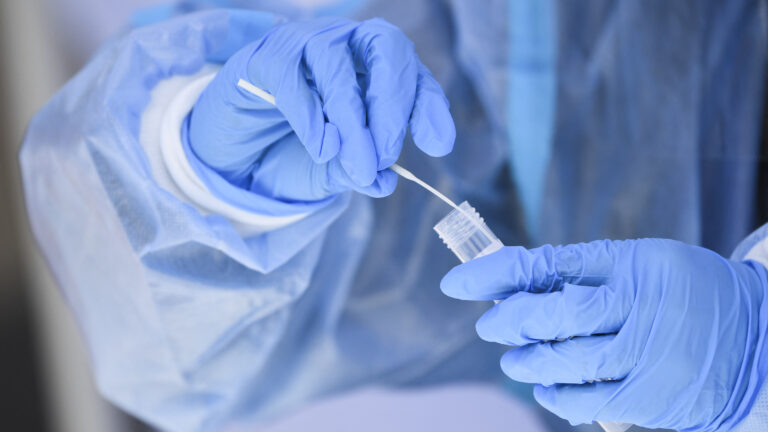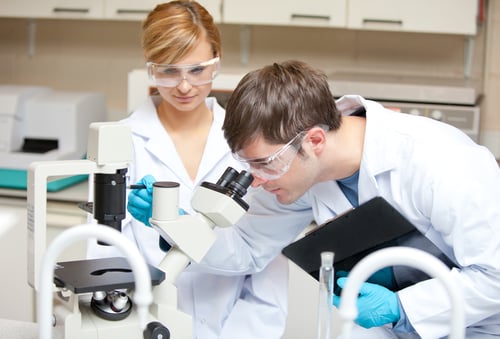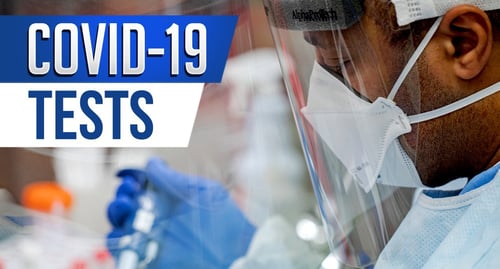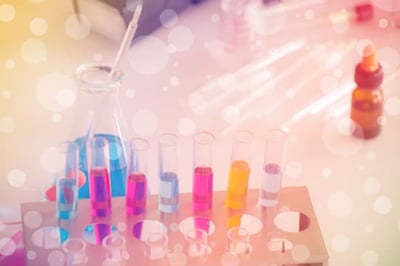

Traditional Culture Tests vs. PCR Tests
Traditional culture tests have been around since the birth of microbiology in the 19th century, but innovations in molecular methods such as PCR tests provide a modern alternative option that is fast and highly accurate.
“Conventional tube culture systems have long been the mainstay in clinical virology for the growth and identification of viruses from clinical specimens,” wrote Richard L. Hodinka and Laurent Kaiser in the Journal of Clinical Microbiology almost a decade ago. “Molecular methods, in particular, the PCR, have usurped the role of viral culture in many laboratories, limiting the use of this traditional method of virus detection or replacing it altogether.”
Culture tests vs. PCR tests might have remained fodder for scientific journals, but the COVID-19 pandemic put the polymerase chain reaction (PCR) test in the spotlight as the nose swab PCR test for COVID-19 proved both accurate and reliable for diagnosing the virus.
“The PCR test has been the gold standard test for diagnosing COVID-19 since authorized for use in February 2020,” said the Cleveland Clinic.
Evolution of Testing: From Leeches to Laboratories
An article published in “New Microbes and New Infections” in 2020 says the first liquid artificial culture medium was created by Louis Pasteur in 1860.
Early blood culture methods were labor-intensive and in some cases still primitive with some of the first procedures to collect blood from patients recommending the use of leeches.
Culture tests can still take time to return their results with the Cleveland Clinic saying the “process takes one to five days, depending on the type of bacteria.”
As early as 1913 the vaccinia virus was grown in cell culture and by the 1930s both the smallpox virus and yellow fever virus were propagated in cell cultures for the purpose of vaccine production, according to a paper in Clinical Microbiology Reviews.
Culture tests were the gold standard, but that was to change after the discovery of the DNA double helix structure in 1953.
DNA polymerase chain reaction testing got its birth in the 1970s and the PCR technique is described in a Science magazine article in 1985. By the 1990s, patents were being filed, Nobel Prizes collected, and the first real-time PCR instruments developed.
In the last 20 years, real-time PCR instruments have been launched and a new gold standard for testing established.
How Traditional Culture Tests Work
Your healthcare provider will take a sample from your body for traditional culture tests to help identify a bacteria, virus, or pathogen.
Your culture test could be done in several different ways including:
- Blood culture: Sample usually taken from the vein in your arm.
- Stool culture: You provide a stool sample to be tested.
- Urine culture: Usually you will be asked to provide a sample into a sterilized cup at your healthcare provider’s office.
- Throat culture: The back of your throat is swabbed for a sample of cells.
- Sputum culture: You will provide a sample by coughing up sputum or phlegm.
- Wound culture: A syringe will be used to take a sample, or a piece will be collected, from a possibly infected cut or burn.
- Cerebrospinal fluid culture: A needle will collect a sample fluid from between two vertebrae. Also called a spinal tap.
These samples will then be sent to a lab where the lab staff will use specific techniques to make the cells multiply and grow.
“This gives experts enough bacterial cells to examine under a microscope or test for specific chemical reactions, including susceptibility to various antibiotics,” says The Cleveland Clinic.
If the sample contains enough bacteria or virus to confirm the infection, then your healthcare provider will be notified.
What are PCR Tests?
Since most viruses and other pathogens contain DNA and RNA, polymerase chain reaction (PCR) tests have become a fast, highly accurate way to diagnose certain infectious diseases and genetic changes.
“The tests work by finding the DNA or RNA of a pathogen (disease-causing organism) or abnormal cells in a sample,” says MedlinePlus.
You might remember from your high school or college science classes that:
- DNA is the genetic material that contains instructions and information for all living things.
- RNA is another type of genetic material. It contains information that has been copied from DNA and is involved in making proteins.
During a PCR test, a small amount of genetic material in a sample is copied multiple times. The copying process is known as amplification. If there are pathogens in the sample, amplification will make them much easier to see.
PCR tests may go by many different names including:
- rtPCR
- reverse transcription PCR
- qPCR
- quantitative PCR
- Real-time PCR
6 Ways in Which PCR Tests are Better than Culture Tests
PCR tests have become the gold standard vs. culture tests, not just in COVID-19 testing, but across the spectrum. Here are six reasons why PCR tests perform better than traditional culture tests:
- Faster: PCR tests are faster than culture tests with rapid tests returning in several hours. Most PCR tests return results in less than 48 hours, and many have a 24-hour turnaround.
- More Accurate: Wise DX, for example, can identify targeted pathogens and antibiotic-resistant genes with near-perfect accuracy using PCR technology.
- It Can Detect Infections at Early Stages: While other tests may miss the early signs of disease because there are not enough viruses, bacteria, or other pathogens in the sample, PCR tests can detect disease when there is only a very small number of pathogens in your body.
- It Can Detect Infections Before Your Body Does: PCR tests can detect such minute amounts of pathogens that they can detect viruses or bacteria in your body before your immune system has had time to develop an antibody response.
- Promotes Antibiotic Stewardship: It is not unusual for doctors to prescribe patients antibiotics as a precaution while they await culture tests to return from the lab. The speed of PCR tests reduces the unnecessary taking of such medicine, thus reducing the chance of adverse drug reactions and stopping the growth of antibiotic-resistant genes.
- You Will Get a Result: In traditional culture tests, there is the chance your test result could come back as “no growth” results which will not necessarily rule out infection. Standard culture testing for UTIs, for example, can be highly inaccurate, according to research, explaining why doctors often prescribe antibiotics for suspected UTIs regardless of culture test results.
There are many other reasons why PCR tests have gained in popularity including the fact that they can identify a genetic change that can cause diseases as well as find small amounts of cancer cells that might be missed in other types of tests.
Subscribe to email updates
Related Articles

Topics

Topics

Topics



